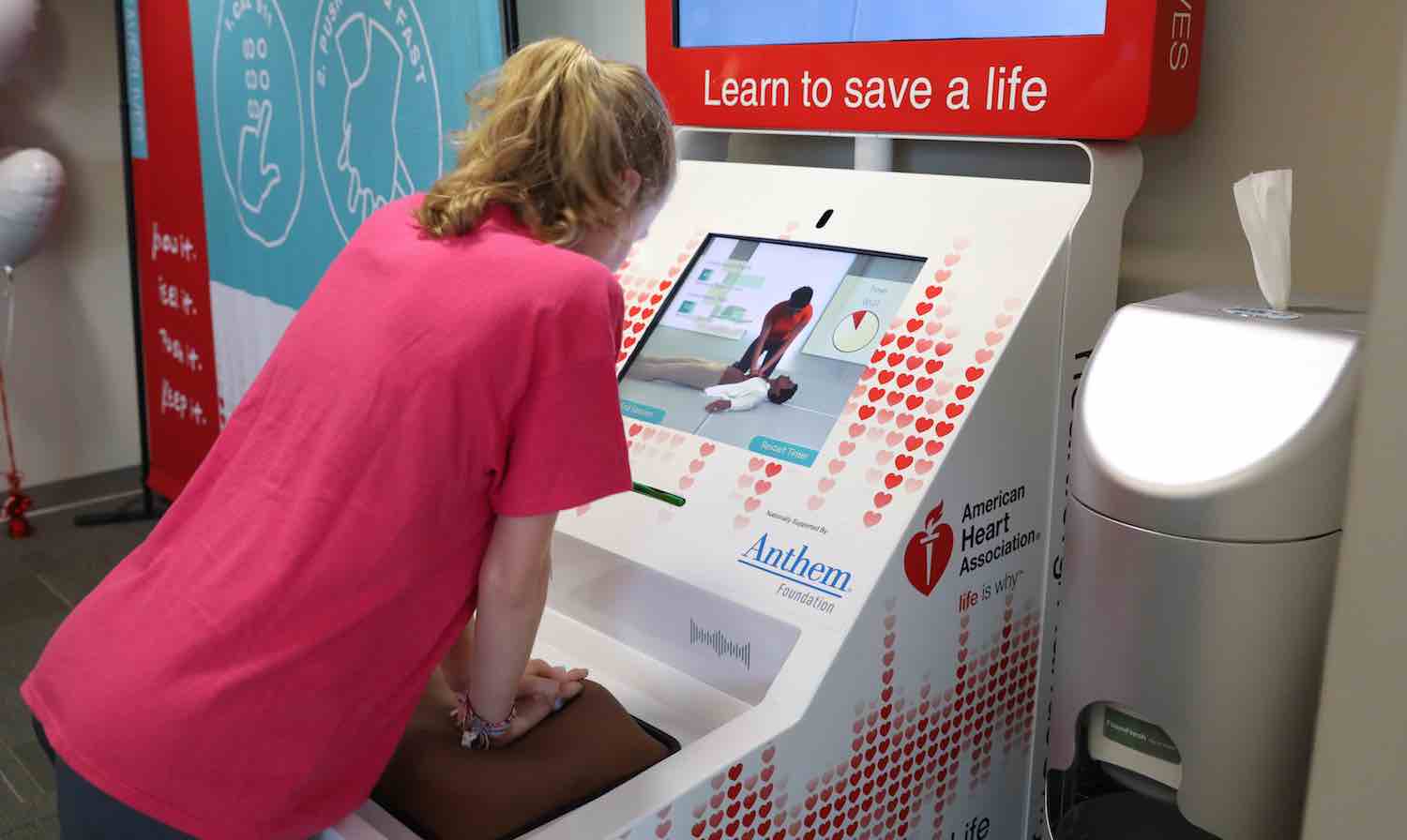These little kiosks are teaching people an invaluable life-saving skill in just five minutes– and this new study shows that it is just as effective as undergoing a full class.
People who learn hands-only Cardiopulmonary Resuscitation (CPR) using a five-minute kiosk-based program in an airport performed CPR as well as those who attended a 30-minute, facilitator-led training session, according to research by the American Heart Association.
Each year, more than 350,000 cardiac arrests occur outside of the hospital. Almost 90% of those people die—but survival rates can triple when bystanders perform CPR.
RELATED: When Man Suddenly Collapses, People Line Up For 96-Minute CPR Marathon to Save Him
In 2016, the Association rolled out the kiosk program and, to date, there have been 30 training booths installed across the U.S., primarily in airports. After evaluating the program’s success, they hope to install more kiosks in the near future.
“Less than half of out-of-hospital cardiac arrest victims receive CPR from a bystander, which is a grim statistic that we need to improve,” said John Meiners, the Association’s Chief of Mission Aligned Businesses and Healthcare Solutions. “The study provides insights on hands-only CPR education methods that deepen our understanding of how people can continue to be trained more efficiently and effectively, so they’ll feel empowered and confident to take action.”
The study, which was published in Annals of Emergency Medicine, examined three methods of teaching hands-only CPR: facilitator-led classroom training, which typically lasts 30 minutes and enables participants to practice CPR with the assistance of an instructor; kiosk-based learning, a five-minute, one-on-one training program that uses high-fidelity manikins that provide feedback on the quality of compressions; and a one-minute, public service announcement video.
The researchers found that people who watched the one-minute training video scored lower than the classroom group in total score, but there were no significant differences in total score between classroom and kiosk participants. The video-only group performed lower on compression depth than the classroom group, while the kiosk group outperformed the classroom group on hand position score, but scored lower on compression depth.
WATCH: Student Saves Drowning Squirrel By Doing CPR She Learned From Watching ‘The Office’
Participants in the kiosk session performed as well as those in the classroom session in total score and compression rate. The kiosk users had poorer performance on compression depth, which suggests that this could be an area for improvement in the kiosk’s instruction and feedback.
Because CPR is a psychomotor skill, one that combines mental processes with physical action, the more a person practices, the more they improve, said study co-author Lana M. Gent, Director of Product and Research Innovation at the Association.
Based on the study results, kiosk-based CPR training, which is free for participants and located in high-traffic areas such as airports and shopping malls, is a good option for anyone who wishes to learn or reinforce hands-only CPR skills, she said.
CHECK OUT: Doctor That Discovered Natural Way to Treat Vertigo for Free Writes Book On How Sufferers Can Thrive
“We have heard stories from people who have saved a person’s life after learning hands-only CPR at a kiosk, as well as stories from healthcare providers who use a kiosk to refresh their skills between flights at an airport,” Gent said. “Based on the findings from this study, we hope to have more kiosks placed in high-traffic locations.”
If you would like to sponsor your own training kiosk or find a kiosk near you, you can check out the American Heart Association website.
(WATCH the testimonial video below) – Photo by American Heart Association
Save Your Friends From Negativity By Sharing The Good News To Social Media




















